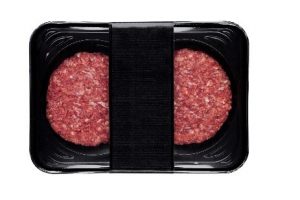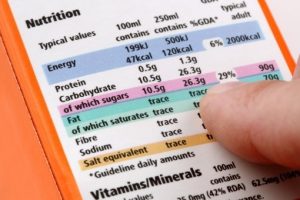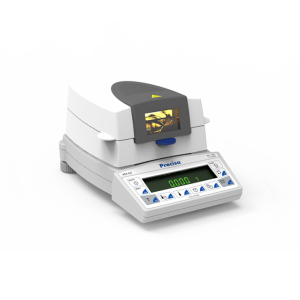From Farm to Fork Step 2: Food Processing and Packaging using Gas Sensing and Precision Weighing
Food processing refers to a series of mechanical or chemical operations which can be performed on primary food substances in order to change or preserve it. The main purposes of food processing include preservation, safety, nutrition, convenience, taste and affordability.
This article will explore just a few of processes requiring gas sensing or precision weighing to ensure that food lasts longer and stays safer. For example, modified atmospheric packaging/storage, weighing ingredients, measuring density and measuring moisture content.
Gas Sensing for Modified Atmospheric Packaging and Storage
Modified atmosphere packaging (MAP) is the practice of modifying the composition of the internal atmosphere of a package in order to improve the shelf life.
This is common in food packaging and transport, where MAP can be used to enable fresh and minimally processed packaged food products to maintain visual, textual and nutritional appeal. Through the precise control of the package’s gaseous environment, the shelf life of the product can be extended without the requirement of adding chemical preservatives or stabilisers. The ageing process is slowed down which reduces colour loss, odour and off-taste resulting from product deterioration, spoilage and rancidity that can be caused by mould and anaerobic organisms.
As a result, manufacturers will have more control over product quality, availability and costs. They can eliminate product rotation, removal and restocking which will reduce labour and waste disposal costs.
Gas sensors are an essential piece of equipment needed in order to accurately monitor and determine the concentrations of the different gases when producing the optimal blend. The gas sensors used for MAP need to be capable of real-time gas monitoring and analysis.
Both The Guardian and GasCard series of gas sensors from Edinburgh Sensors offer highly-accurate, high quality online gas sensing capabilities for the detection of CO2, well suited for many MAP requirements.
Find out more: Gas Sensors Development Modified Atmospheric Packaging
Precision Weighing for Packaging
Precision weighing can be used when the food is put in packages, mixed with other substances so it will last longer, or when a recipe is used to create a food product. For example, a food product might have a mixture of different ingredients which need to be weighed to ensure they are present in the correct proportions. Accuracy is key, as consumers expect the same, consistent taste as before. It is also important to ensure the right amount of food goes into the package. Precision weighing scales can also be used during quality testing to ensure small samples are high quality and for…
- Batching
- Formulation
- counting
- accumulation
Furthermore, high accuracy balances are an essential tool to enable food and beverage companies to follow strict laws and regulations such as those defined by The Food Standards Agency (FSA) for selling food by weight, food safety and hygiene.
For example, legal-for-trade weighing is an accuracy requirement for business transactions where goods are sold by weight. Precisa’s modern technology supports the repeatable weighing of goods which ensures customer satisfaction, precise billing and accurate inventory records.
Furthermore, there is an abundance of safety and hygiene guidelines which require precise weight measurements in order to avoid the damaging of public health. For example, when designing recipes and edible products exact measurements must be known so that it is safe for consumption and proportions can be affirmed for dietary control.
Precision Weighing to Measure Density
The measurement of density, which is a substance’s mass per unit, can be achieved using a lab balance and is an important quality parameter of both raw materials and finished products.
Density determination is a verification method for a large range of food products and represents an important quality control method in both scientific and industrial fields. Density measurements are used in food technology for the following products:
- beet sugar, syrup/molasses, sucrose, chocolate liquors, dextrose, fructose syrup, high fructose corn syrup, coffee liquor
- coffee extract, condensed milk, soy milk, soy oil
- cooked starch paste, corn starch, food coatings, potato starch, sauces
- glycerin, sodium nitrite
- chicken broth, chicken stock, pork broth
Density is also frequently used in the food and soft drinks industry to provide the Brix value that expresses the sugar content of the drink. Furthermore, for the fragrance and flavours industry density is a primary measurement for determining the quality of incoming raw materials.
If you are interested in how to determine density using one of Precisa’s analytical balances, why not read the first section of this application note: Precisa Balances Applications
Using a Moisture Analyser to Measure the Moisture Content of Foods
Moisture analysis also plays a vital role in all areas of the food industry, from goods-in inspection, through quality control, production and storage, to the development of new products. In nearly all cases, the prepared ingredients have optimum moisture content, providing the best possible taste, consistency, appearance and shelf life.
Moisture content is one of the most commonly measured properties of food materials. It is important to food scientists for a number of different reasons:
- Legal and Labelling Requirements. There are legal limits to the maximum or minimum amount of water that must be present in certain types of food. In the sale of food items such as meat, there is a requirement to display the percentage of moisture content if it is above 5%.
- Economic. The cost of many foods depends on the amount of water they contain – water is an inexpensive ingredient, and manufacturers often try to incorporate as much as possible in a food, without exceeding some maximum legal requirement.
- Microbial Stability. The propensity of microorganisms to grow in foods depends on their water content. For this reason many foods are dried below some critical moisture content.
- Food Quality. The texture, taste, appearance and stability of foods depends on the amount of water they contain.
- Food Processing Operations. A knowledge of the moisture content is often necessary to predict the behaviour of foods during processing, e.g. mixing, drying, flow through a pipe or packaging.
It is therefore important for food scientists to be able to reliably measure moisture content. Precisa’s moisture content analysers feature readabilities from 1mg (0.001g) to 0.1mg (0.0001g) and can reach temperatures of up to 230 degrees Celsius. Therefore, they are the perfect solution for the moisture content analysis of food products.
Find out more about Precisa’s Moisture Analysers.
Get in Touch
If you have enjoyed learning about the use of our products in food processing and packaging, why not join us on social media and sign up to our newsletter via the button below?
Alternatively, if you are in the food industry and any of our products or our sister company’s gas sensors have caught your eye, please do not hesitate to contact us or contact Edinburgh Sensors. We look forward to hearing from you.






